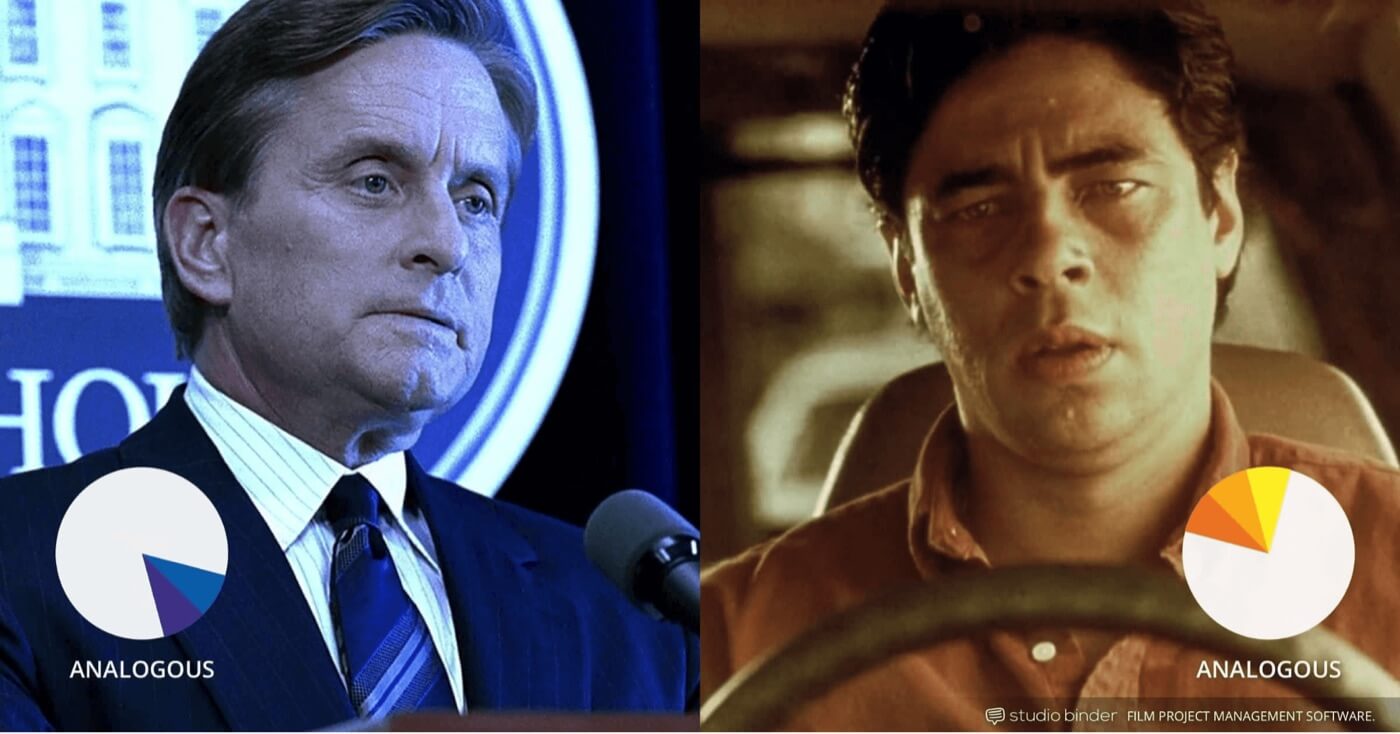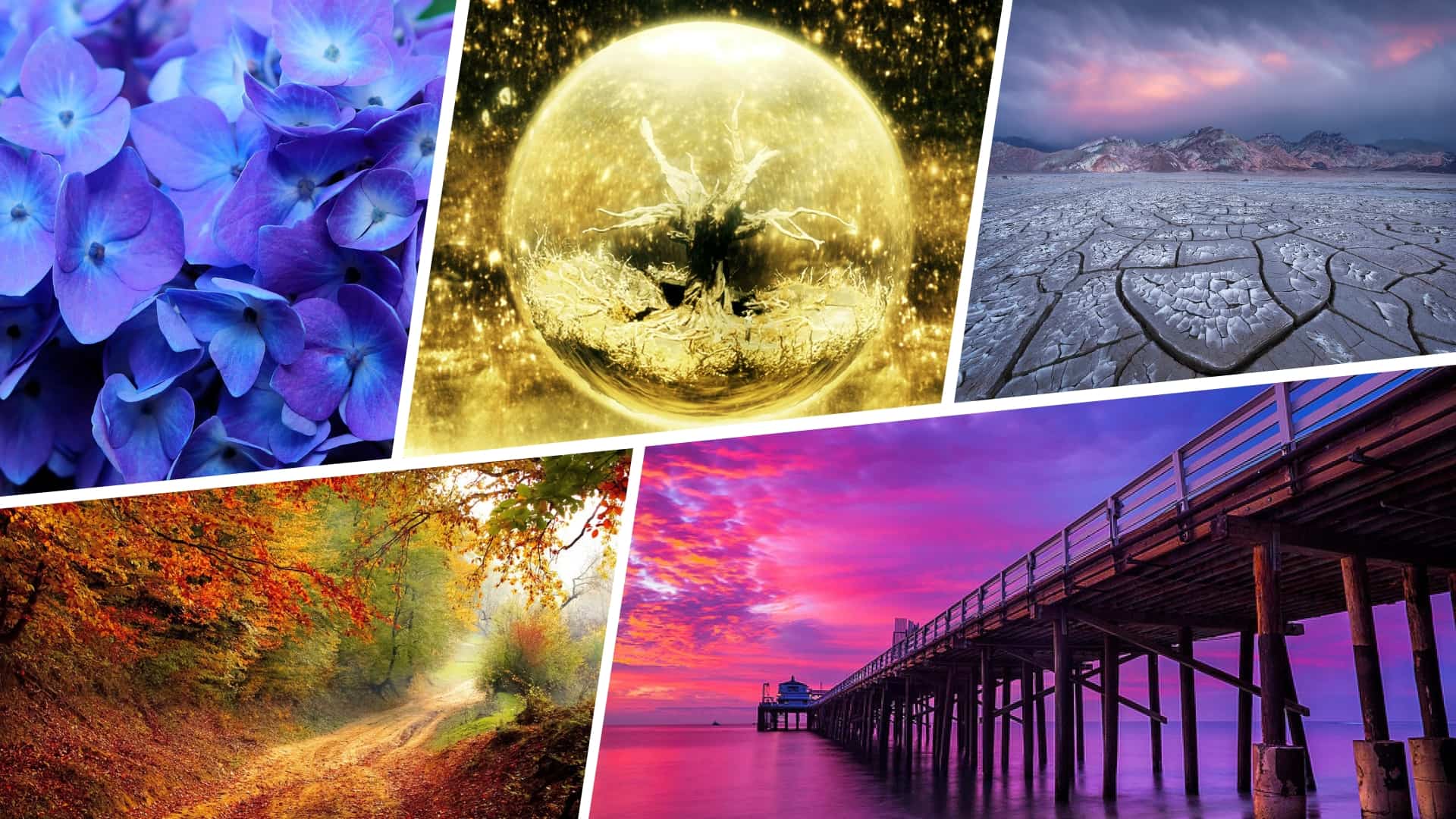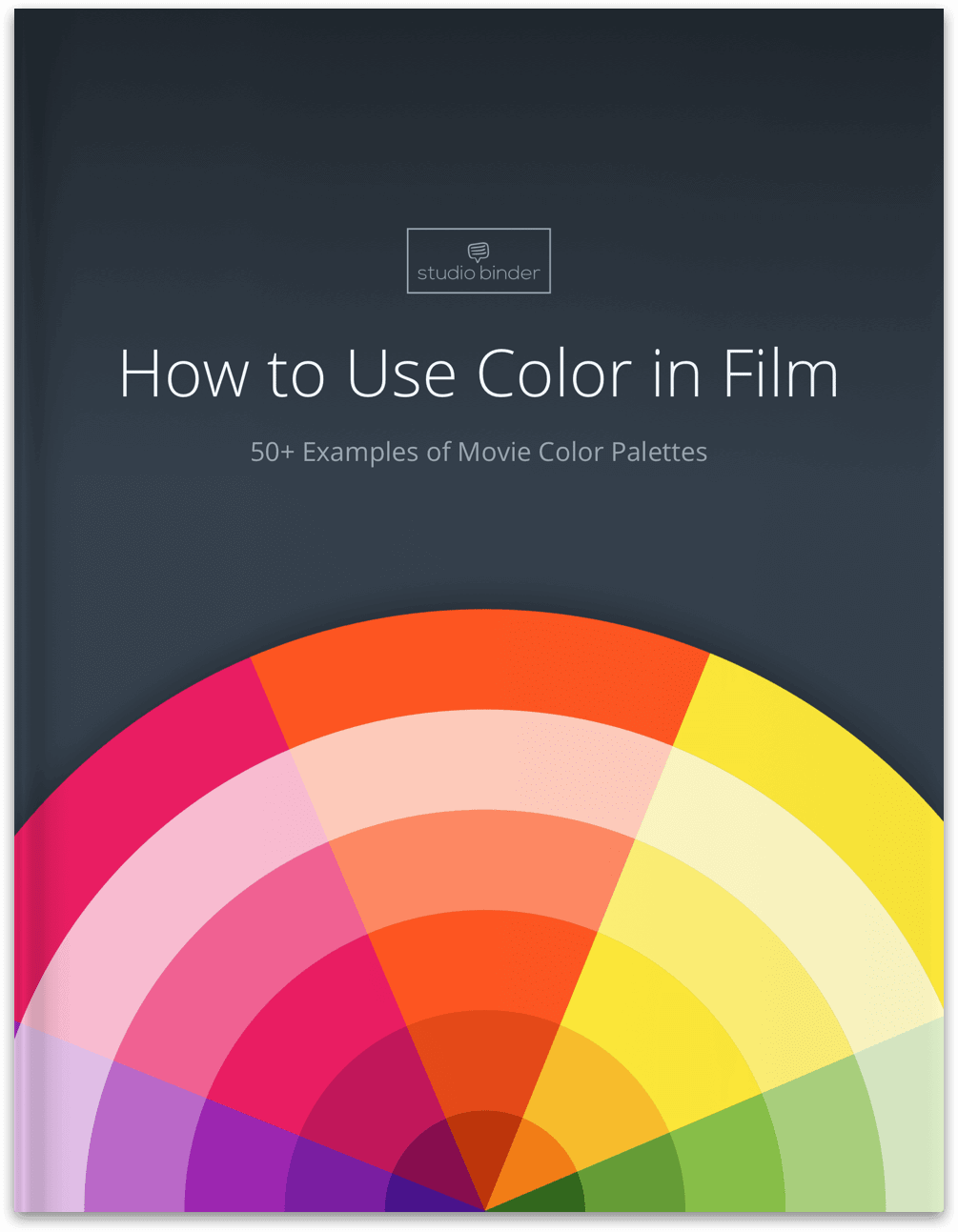What is an analogous color scheme? How can it be utilized in your filmmaking efforts, why does it matter and how is it different from other color palettes? We will be answering each of these questions, examining how analogous colors function in traditional art, taking a look at the psychology of color in storytelling, and showcasing some of the best analogous color schemes found in movies.
Analogous color harmony
An analogous color scheme definition
The term “analogous” might be unfamiliar but the sight of an analogous color scheme is one you have definitely seen before. Analogous color schemes exist in the world all around us.
Before we look at examples of analogous color schemes and talk about why they work so well together, let's start with a definition.
ANALOGOUS COLOR SCHEME DEFINITION
What is an analogous color scheme
An analogous color scheme is typically comprised of three colors that fall next to each other on the color wheel: the first is the dominant color, the second is the supporting color, and the third serves as an accent. Black, white, and gray can also be incorporated into any analogous color scheme. Additional colors can be used as long as they border each other on the color spectrum. Analogous color schemes occur heavily in nature and find frequent use in the traditional arts.
Analogous Colors
- Occurs in nature
- Comprised of neighboring colors
- Most commonly features three colors
To learn more about the different types of color schemes at your disposal as a filmmaker, be sure to read our articles on monochromatic, complementary, and triadic color schemes as well.
And be sure to download our free ebook How to Use Color in Film to further deepen your understanding of movie color design.
Cinematography techniques pdf
FREE Download
How to Use Color in Film
Hue, saturation, brightness — the three elements of color that make all the difference. In this book, we'll explain the aesthetic qualities and psychology effects of using color in your images. Topics include color schemes like analogous and triadic colors and how color palettes can tell stories of their own.
Analogous schemes
How analogous colors work in art
Analogous colors are commonly found in nature. Colors that neighbor each other on the color wheel have a comfortable, pleasant appearance when looked at side-by-side. Due to the high occurrence of analogous color scheme examples in real life, it only makes sense that analogous color schemes would be a popular color choice in traditional art forms as well.
Having an understanding of the way in which analogous color schemes function in traditional art will prove helpful and insightful when it comes to time to make use of analogous colors in your filmmaking career.
The following video offers an explanation and tutorial for using different analogous color schemes in the traditional arts.
Analogous color scheme examples with pastels
Finding and choosing which colors to make up your analogous color scheme is an easy task. Simply refer to a traditional color wheel, pick your dominant color, and the other colors of your palette are already decided without you needing to do any extra work. Whichever dominant color you choose, your supporting colors will be found right next to it.

Examples of analogous color schemes
Using an analogous color scheme in a film can serve to replicate the natural world or can be used to convey a desired psychological effect. In the next section, we'll dive more into that concept.
Related Posts
Analogous scheme
The psychology of color
The psychology of color can hold significant influence over a viewer’s response to an image. Certain colors can evoke particular subconscious reactions when utilized properly. To understand this subconscious relationship and learn how to make the best use of these psychological effects in storytelling, we need an understanding of color theory.
In this video, we look underneath the surface of one of cinema's most colorful directors: Wes Anderson. We explore how Anderson balances sad characters in a colorful world and how that juxtaposition creates a unique overall mood.
Color Theory and Wes Anderson’s Style • Subscribe on YouTube
When utilizing colors for their psychological effects, a filmmaker can determine their own color associations as established within the film. Or they can rely on the pre-established associations for particular colors. Whether you realize it or not, certain colors evoke certain psychological responses in the human brain at a subconscious level.
These pre-determined associations have been reinforced throughout generations of storytelling for both the subconscious associations and for the thematic relevance. Refer to the helpful chart below for some of the most common responses associated with particular colors.

The psychology of color visualized
Analogous color schemes are usually pleasant and comfortable to look at. The colors on display in an analogous color scheme are harmonious and never clash with one other. This color pairing results in a unified image and is a great choice for when you want consistency on-screen without simplifying all the way down to a monochromatic color palette.
Let's take a tour of Stanley Kubrick's use of color, including his wondrous use of analogous colors.
The Colors of Kubrick • Subscribe on YouTube
The use of color in storytelling is boundless. It is true that there are plenty of films that disregard color as a creative choice. These are either filmmakers who don't value this facet of storytelling or opt instead for a color scheme that purely represents the real world and nothing more.
But there are also countless examples of excellent films which make color a key element of their overall style and meaning. This tribute to color in storytelling showcases the power of meaningful color scheme choices.
Cinema Cartography examines color in storytelling
It’s not just color grading that goes into a film’s color scheme but also the production design and other creative elements. Be sure to pay color the attention it deserves when making your own movies.
Examples of analogous color schemes
Analogous color scheme examples
Now that we know what an analogous color scheme is, let’s take a look at a few examples of analogous color palettes in films.
Children of Men is a great example of an analogous color palette providing a film with a unified look. In this case, that look is dark, dirty, and depressing, to reflect the reality of the film’s universe.

Children of Men makes use of an analogous color palette
The color scheme of an overall film can change from scene to scene. This earlier scene from Children of Men still makes use of an analogous color scheme but uses a different color as the dominant focus of the palette. Notice how even the skin tones are tinted to match the color scheme of the scene.

Children of Men’s adaptive analogous color scheme
Steven Soderbergh’s Traffic is another film that switches between different analogous color schemes depending on the scene. In Traffic, the different color tones distinguish the different locations and plotlines of the film, giving them their own distinctive flavor from one another.

Warm and cool analogous color schemes in Traffic
Denis Villeneuve's color palette has show great variety within his films. His 2013 thriller Prisoners makes excellent use of an analogous color scheme to provide a unified, cold look for the film.

The color palette of Prisoners
There are so many creative ways in which to use color in cinema. The different color palettes at your disposal are near-limitless. Explore more movie color palettes and explore the thematic and psychological effects of color in your own film projects, and continue learning about color theory with the rest of our articles on color schemes.
UP NEXT
How to Use Color in Film
Now that we know the answer to the question, “what is an analogous color scheme?” you can further your education on color schemes by reading our article about cinematic color writ large. A knowledge of multiple types of color schemes is essential for any type of visual artist, and our guide to using color in film will round out your chromatic education.
Up Next: Color in Film →
Showcase your vision with elegant shot lists and storyboards.
Create robust and customizable shot lists. Upload images to make storyboards and slideshows.

